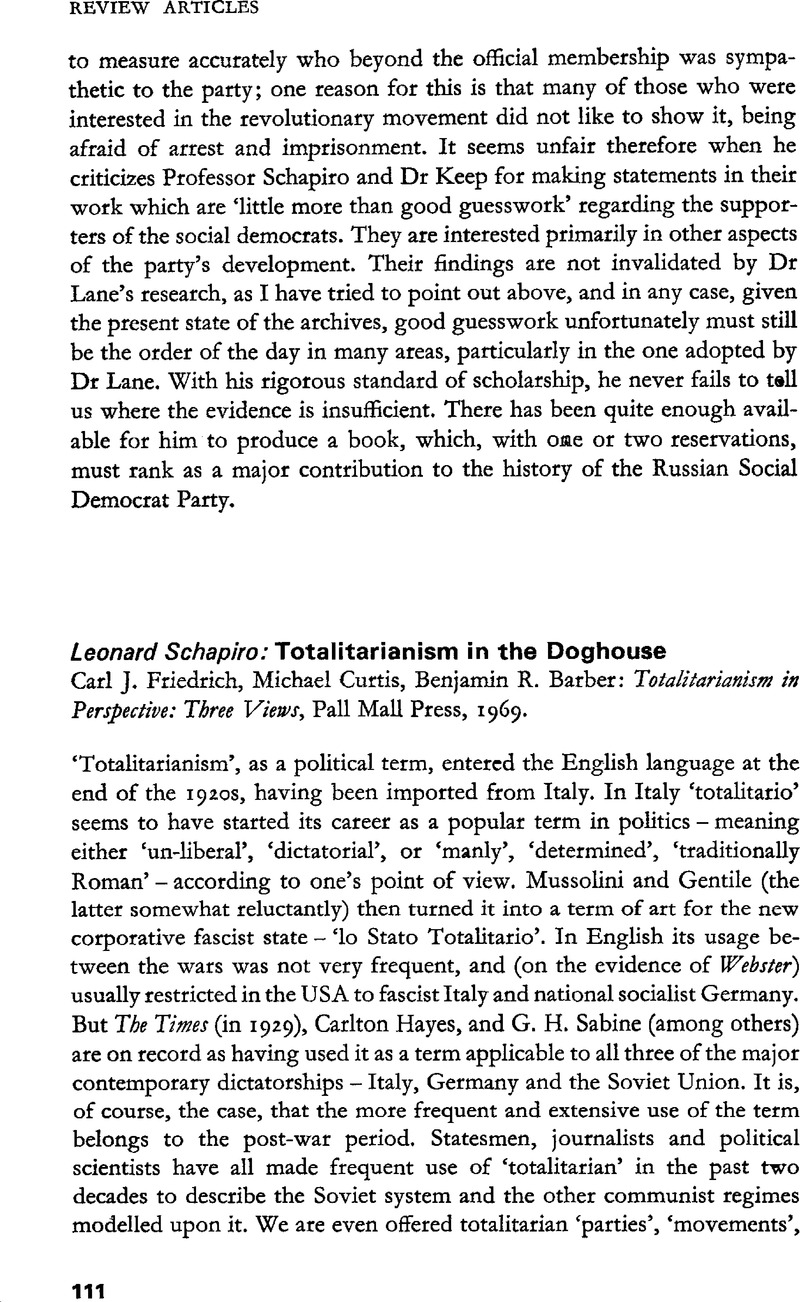No CrossRef data available.
Published online by Cambridge University Press: 28 March 2014

1 One-dimensional Man, quoted by Barber on p. 50, fn. 101. Cf. Marcuse, on ‘repressive tolerance’ in Wolf, R. P., Moore, Barrington JnrandMarcuse, Herbert, A Critique of Pure Tolerance, London, 1969, pp. 95–137 Google Scholar.
2 See Warner, Geoffrey, ‘The United States and the Origins of the Cold War’, International Affairs, Volume 46, No. 3, p. 529 CrossRefGoogle Scholar.
3 Ludz, Peter Christian, Parteielite im Wandel, Cologne and Opladen, 1968 Google Scholar.
4 See on this whole question the important study by Hough, Jerry F., The Soviet Prefects, Cambridge, Mass. 1969 CrossRefGoogle Scholar. And see also a recent study, ‘Representation of Career Types in the Soviet Political Leadership’, by Frederic Fleron, in Barry Farrill, R. (ed.), Political Leadership in Eastern Europe and the Soviet Union, Chicago, 1970, pp. 108–39Google Scholar.
5 Schapiro, Leonard, ‘The Concept of Totalitarianism’, in Survey, No. 73, Autumn 1969, pp. 93–115 Google Scholar.
6 Toynbee, Arnold, ‘A Centenary View of Lenin’, International Affairs, Vol. 46, No. 3, 07 1970, pp. 490–500 CrossRefGoogle Scholar.
7 Oakeshott, Michael, ‘The Masses in Representative Society’, in Hunold, Albert (ed.), Freedom and Slavery, Dordrecht, 1961, pp. 151–70Google Scholar.